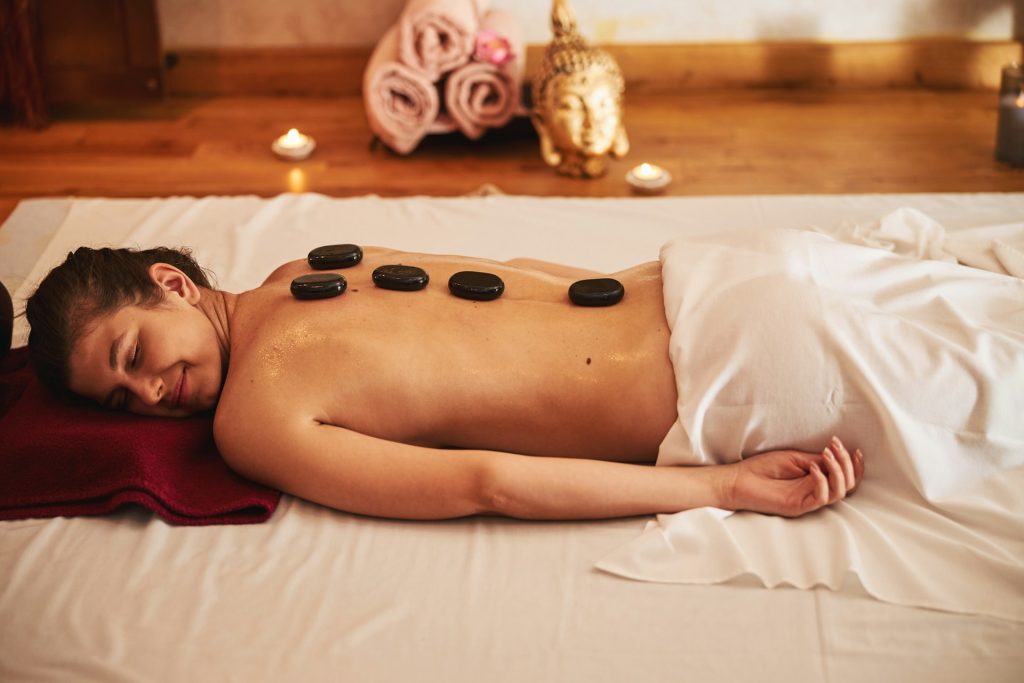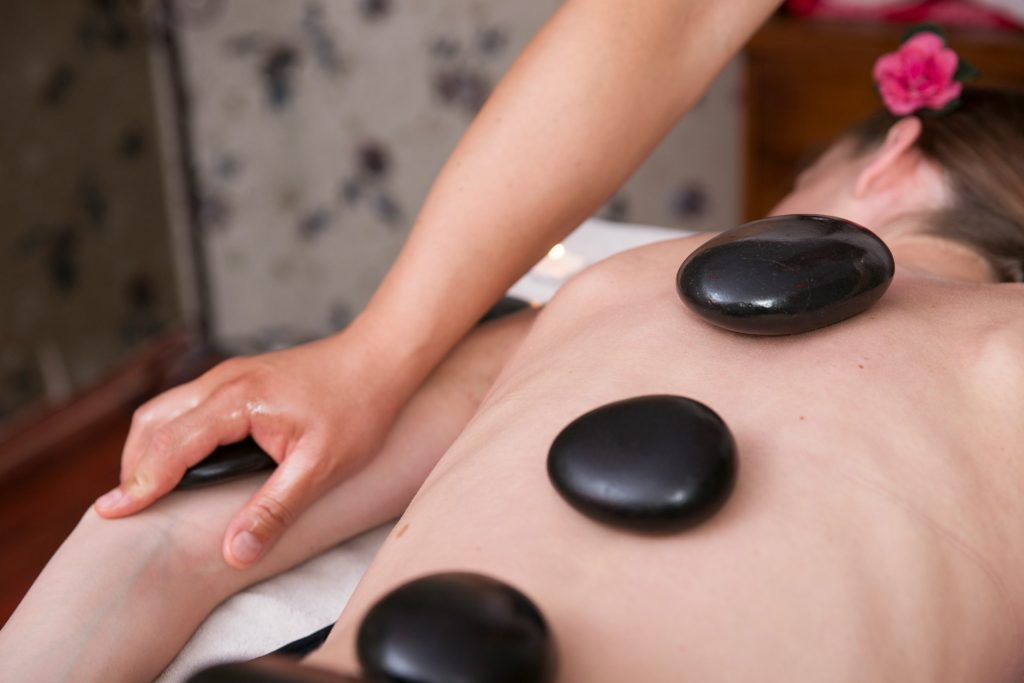Hot stone and Swedish massages are popular therapies that cater to those seeking relaxation and relief from muscle tension. While they share the common goal of soothing the body, they employ distinct methods and benefits. Understanding the differences between these two can help you choose the one that best aligns with your wellness needs.
Introduction to Massage Therapy
At its core, massage therapy is a time-honored practice that promotes healing, relaxation, and well-being. Whether massage is a gentle technique to calm the mind
and soothe the body or a more robust approach targeting deep-seated aches, it’s a versatile tool for maintaining holistic health. Among the various styles, Swedish massage and hot stone therapy stand out for their unique benefits.
The Role of Heat in Relaxation and Healing
Heat plays a pivotal role in enhancing relaxation and facilitating healing. It soothes muscles, increases blood flow, and can help to reduce inflammation. In massage, the application of heat helps prepare the body for deeper work, allowing for a more profound release of tension.
Pressure and Technique: The Key Elements of Massage
Effective massage hinges on the skillful application of pressure and technique. Hot stones are often incorporated to deepen relaxation, while Swedish massage techniques use a variety of strokes, including circular movements, to relax and tone muscles. The right balance of these elements can significantly influence the therapeutic outcome of a massage session.

The Essence of Swedish Massage
Swedish massage, often called classic massage, is renowned for its gentle approach to enhancing blood and lymph circulation and relaxing the entire body. This form of massage therapy employs techniques like petrissage, a kneading motion that works to twist superficial tissues and alleviate tightness of the muscles.
Techniques and Strokes Used in Swedish Massage
In Swedish massage, therapists utilize a series of movements, including long glides, kneading, and circular movements, to relax and stimulate muscles. The pressure applied can vary from light to firm, but the focus remains on enhancing circulation and promoting overall relaxation rather than deep tissue manipulation.
The Benefits of Gentle Pressure and Relaxation
Gentle pressure in massage can have profound effects, from reducing stress to aiding in better sleep. Swedish massage, in particular, emphasizes relaxation and is well-suited for those new to massage or sensitive to intense pressure. The nurturing touch helps release emotional and physical tension, creating a sense of peace and well-being.
The Therapeutic Power of Hot Stone Massage
Hot stone massage elevates the traditional therapy experience by using heated stones to enhance the effects of manual strokes. The stones’ warmth penetrates deeply, allowing therapists to effectively release muscle tension and promote relaxation. This method improves blood flow and offers a unique sensation that many find incredibly soothing.
How Heated Stones Enhance the Massage Experience
During a hot stone massage, therapists place stones at strategic points of the body to maximize therapeutic benefit. The stones’ heat enhances blood flow and helps to soften muscles, allowing the therapist to stroke along the length of muscles with greater ease and effectiveness, thus enhancing the massage experience.
Conditions and Areas Best Treated With Hot Stone Therapy
Hot stone therapy is particularly adept at addressing chronic muscle pain, stress, and tension. The concentrated heat from the stones works well on areas that typically harbor tension, such as the back, shoulders, and neck, providing relief and promoting a deeper sense of relaxation.
Comparing Hot Stone and Swedish Massage
When comparing hot stone massages with Swedish massages, it’s crucial to consider your personal comfort with heat, the level of pressure you prefer, and the specific aches and pains you aim to address. Hot stone therapy is known for its heat application, while Swedish massage is more focused on promoting relaxation through a traditional oil massage and gentle strokes.
1. Heat Application and Its Impact
Heat application in massage therapy can dramatically enhance the relaxation and therapeutic effect. It helps to loosen tense muscles, making it easier for the therapist to manipulate points of the body that require attention. The warmth also encourages blood flow, aiding in healing and comfort.
2. Tailoring Pressure to Individual Needs
Every individual responds differently to pressure during a massage. While some may find solace in a Swedish massage’s light, rhythmic touches, others may benefit from the firm, targeted pressure facilitated by the heat in a hot stone massage. The key is tailoring the experience to your comfort and therapeutic needs.
3. Addressing Particular Health Concerns
A therapeutic massage can be a powerful ally in managing various health concerns. Both Swedish and hot stone massages offer unique benefits that can alleviate stress, improve circulation, and reduce pain. Your specific health goals and the recommendations of a qualifiA9ed massage therapist should inform your choice.
Personal Preferences in Massage Therapy
Your personal preferences play a significant role in choosing the right massage therapy. If massage is a gentle preference of yours, a Swedish massage or a craniosacral massage might be ideal. When selecting a massage style, it’s important to consider what feels most comfortable and beneficial for your body and mind.
Determining the Right Massage for Your Lifestyle
Choosing between hot stone and Swedish massage therapy depends on your personal needs. Suppose your lifestyle involves a lot of physical activity. In that case, you might benefit from the classic massage techniques used in Swedish massage, which twist superficial tissues and stimulate muscles to relax and tone. Petrissage, a kneading movement, can enhance blood and lymph circulation, while percussion, or drumming, helps release the tightness of the muscles. For those who have specific trigger points causing discomfort, Swedish massage can be particularly helpful.
The Significance of Session Duration and Frequency
When considering massage therapy, consider how much time you can dedicate to sessions and how often you can attend them. The benefits of massage can accumulate over time, so regular appointments might be more effective for sustained wellness. However, the intensity of the massage and the individual’s capacity for relaxation also play a role. If you’re dealing with chronic pain or high levels of stress, more frequent sessions might be necessary to achieve the desired therapeutic effect.

Practical Considerations in Choosing Your Massage
When selecting massage therapy, one must be aware of personal health concerns. For instance, if you have a history of blood clots, certain types of massage that target trigger points or involve deep pressure might not be advisable. Additionally, consider the qualifications of the therapist and whether their expertise aligns with your health needs. The right therapist should be able to tailor the massage to suit your individual requirements and ensure your safety and comfort throughout the session.
Costs and Accessibility of Different Massage Types
While hot stone massage may relieve stress and muscle pain effectively, it might also come with a higher price tag due to the additional equipment required. On the other hand, classic Swedish massage, known to relieve muscle tension and sore muscles, is often more readily available and can be more affordable. It’s crucial to weigh the potential benefits against the costs and accessibility of these massage types when deciding to ensure that you can maintain the best regimen for you.
Expertise and Training of Massage Therapists
Skilled therapists use their hands to relieve pain and stress, which requires significant expertise and training in massage therapy. When seeking a therapist, inquire about their proficiency in addressing specific issues, such as pain associated with the temporomandibular joint or other chronic conditions. A well-trained therapist can adapt their techniques to your needs, ensuring each session contributes positively to your well-being.
Booking Your Ideal Massage Experience
Arranging your massage involves more than just picking a date and time. Consider what you hope to achieve with the session, such as relaxation or relief from pain, and communicate these goals when booking. A good therapist will use this information to customize your experience, ensuring the massage caters to your needs and preferences.
What to Expect When Scheduling a Massage
When you schedule a massage, be prepared to discuss your health history and any specific concerns you may have. This conversation will help the therapist tailor the session to your needs. Also, ask what you should wear and whether you need to bring anything. Understanding these details beforehand will help make your massage experience as smooth and beneficial as possible.
Preparing for Your Massage Session
Before your massage, it’s advisable to hydrate well, avoid eating a heavy meal, and arrive a few minutes early to settle in. Wear comfortable clothing and consider any personal preferences you might have, such as the type of massage oil used. By taking these steps, you ensure that your body is primed to receive the full benefits of the massage, whether you’ve chosen a soothing Swedish session or the deeper heat application of a hot stone massage.
The Takeaway
Your wellness journey is unique, and choosing the right massage can significantly impact your quality of life. Whether you seek the gentle, soothing strokes of a Swedish massage or the focused relief of a deep tissue massage, understanding your body’s needs is essential. Regular sessions with skilled therapists can alleviate pain and enhance well-being.
Explore various treatments, from hot stones’ muscle-relaxing warmth to aromatherapy’s therapeutic benefits. Specialized options like prenatal and sports massages cater to specific needs. The ideal massage blends your body’s requirements with personal rejuvenation, fostering a balanced, fulfilling lifestyle through dedicated self-care. Additionally, consider the mental and emotional benefits, as massage can be a powerful tool for stress relief and mental clarity.
